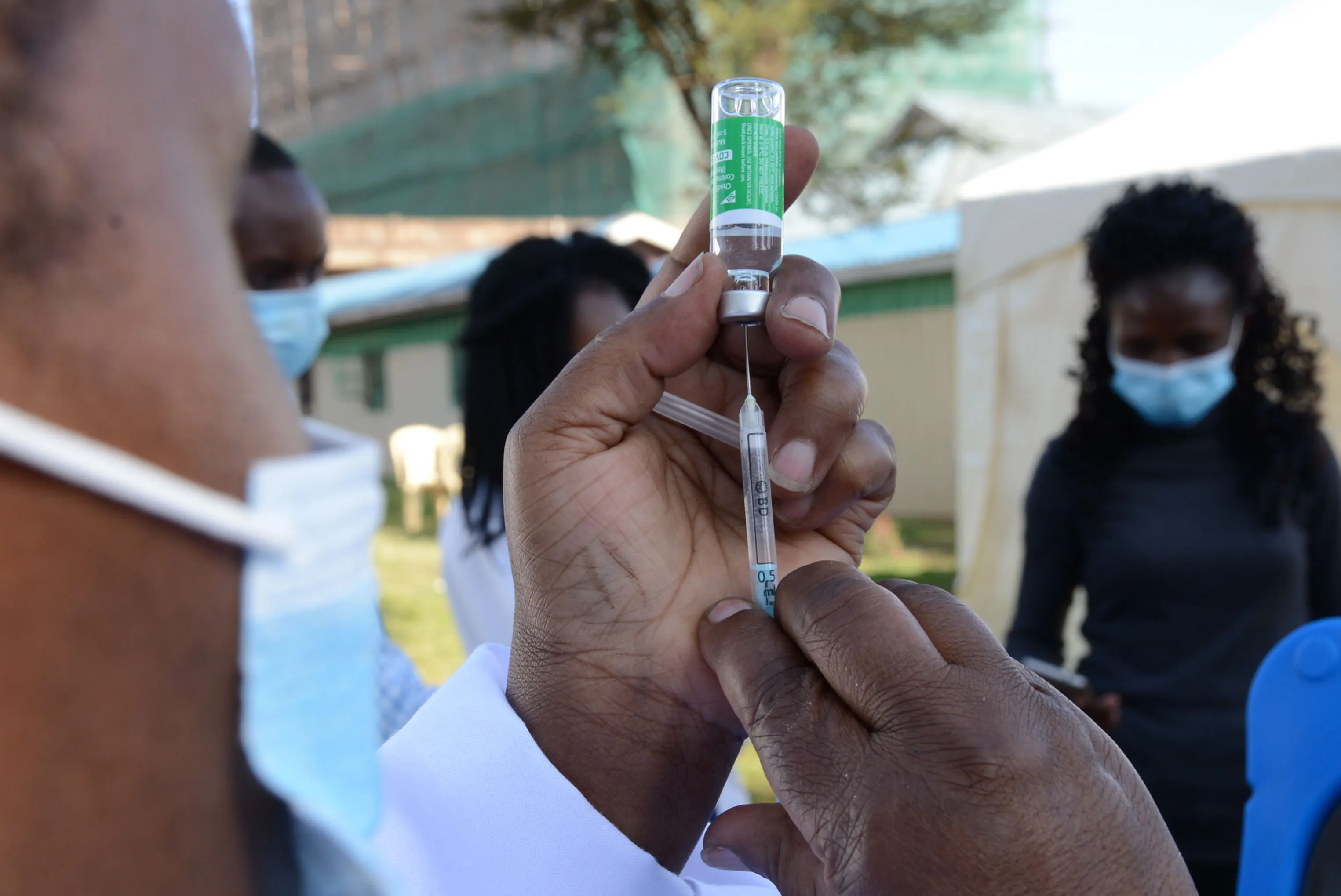 This article is part of the series — 2021: The Year of Vaccines.
This article is part of the series — 2021: The Year of Vaccines.
Plagues, pandemics and epidemics—all have been part of human existence for millennia. However, the human species is yet to endure extinction mainly due to its ability to record events, learn from the past, adapt, and transfer this knowledge across generations.. The idea remains that cooperation is not something that is ‘nice to have’; instead, it is a prerequisite for the perpetuation of humanity.
In reality, there is nothing fundamentally new about making associations between public health, diplomacy, security, and geopolitics. The subject has been thoroughly interrogated through a variety of lenses and has been part of our reality for centuries.
In 165 to 180 AD, the Antonine Plague, also known as the Plague of Galen (after Galen, the physician who described it), was brought to the Roman Empire by troops who were returning from campaigns in the Near East. The total death count had been estimated at five million which was about a third of the population, and it devastated the Roman army.
In 1918, it was the Spanish flu that wreaked havoc. As the virus was subsiding, a devastating second wave of the Spanish Flu hit American shores in the summer of 1918. Soldiers returning from the frontlines of World War I were infected with the disease and passed it on to the American population. Philadelphia hosted the ‘Liberty Loan Parade’ on 28 September 1918, where thousands of Philadelphians attended resulting in mass infection or what we now call ‘super spreader’ events. In contrast, San Francisco citizens were fined a substantial US $5 if they were caught in public without masks. In 1919, the flu pandemic came to an end, as those that were infected either died or developed immunity.
The WHO as a geopolitical epicentre
At the 75
th Commemoration of the United Nations General Assembly on 21 September 2020,
President Ramaphosa stated that,
“The task before us is to chart the course for a transformative and inclusive future in the aftermath of the coronavirus pandemic; and to do so in a manner that respects the worth and dignity of every human being. This year, we pay tribute to 75 years of solidarity and friendship. We are steadfast in our belief that the United Nations is, and must forever remain, the foremost guarantor of world peace.”
The assumption that the World Health Organisation (WHO) and its work were, for the first time, contested in 2020 during the outbreak of the COVID-19 pandemic is misleading. In 1945, during the discussions on the creation and formation of the United Nations (UN), it was envisaged that the UN as a body is expected to be more durable and relevant to the post-war, 20
th-century context. The WHO would be central to ensure that the basic human needs and rights to healthcare as a key component of humanity was realised.
However, it was not long before the Cold War dynamics led to the politicisation of the WHO.
Alex Berezow suggests that tensions began to emerge between the Soviet Union and Western states over funding and influence within the WHO. This resulted in the Soviet Union withdrawing in 1949, alleging that the US had too much influence. In 1956, the USSR returned after Nikita Khrushchev took office. This brings to the fore the similarities with the recent US threat, under former President Trump, to withdraw from the WHO on grounds that China has too much
influence.
The WHO is physically present in 147 countries with six regional offices. This global infrastructure accounts for 70 percent of the organisation’s budget. Eliminating the regional offices could save significant resources without sacrificing efficiency.
Despite its exceptional history on regulating vaccines, its global leadership in health matters is challenged daily, mainly by well financed, agile, and efficient private organisations.
Geopolitical determinants can no longer be seen in isolation of human security where poverty, unemployment, urbanisation, and industrialisation meaningfully impact the geopolitical landscape. The COVID-19 pandemic is now one such determining factor.
Multilateralism and public health
“The future we want, the United Nations we need: Reaffirming our collective commitment to multilateralism—confronting COVID-19 through effective multilateral action” was the theme that ushered in the 75
th anniversary of the UN. While we are proud of its great achievements, we are very aware that the world in 1945 is not the same as 2020, and the challenges that must be confronted are daunting.
International cooperation is, in many ways driven, by a primal urge to survive. When cooperation fails, stark and tragic realities emerge. According to the
Global Report on Food Crises 2020, the COVID-19 pandemic will see more than a quarter of a billion people suffering acute hunger by the end of the year (WFP). Latest numbers indicate the lives and livelihoods of 265 million people in low- and middle-income countries will be severely stressed; this figure is nearly double the previous 135 million across 55 countries pre-COVID. The situation in countries across Africa and the global South are worrisome, as the virus threatens lives and livelihoods, especially impacting vulnerable groups such as women, youth, and the elderly.
Over time, many other multilateral venues for health were established but the WHO remains the norm-setting organisation for health.
The WHO constitution defines health as a human right, and this is a guiding principle for all other health organisations.
COVID-19 health and vaccine diplomacy
The Gavi, the vaccine alliance, was established in 2000 to mitigate risks to poorer nations by ensuring accessible vaccines. Arguably, this was the start of what we call vaccine diplomacy on a global scale. The Gavi Alliance was established to bring UN agencies, governments, the vaccine industry, and other branches of the private sector and civil society together with a view to improving childhood mortality.
Vaccine diplomacy has become mainstream by re-opening the debate on how to ensure affordable and equitable access to vaccines, marking it as an issue of global public interest. Significant gaps exist between countries in the level of access to vaccines, diagnostics, and essential supplies. It is anticipated that wealthier countries will see coronavirus vaccines widely available between September 2021 and March 2022; middle income and emerging economies between September 2021 and summer of 2022; and the poorest countries between spring of 2022 and 2023.
According to the
World Economic Forum 2021 Davos Agenda and their
2021 Global Insights Risk Report, global competition for vaccine doses could lead to higher prices. This is in line with the WHO’s repeated plea that collaborative effort for mechanisms such as the COVAX facility must be strengthened, to avoid a prolonged pandemic. Vaccine diplomacy is based on a number of complex narratives and refers to all aspects of global health diplomacy pertaining to the development, manufacture, and delivery of vaccines as public goods.
International agreements, instruments, and organisations are increasingly incorporating public health issues, such as the Paris Agreement on Climate Change in 2015, the revised International Health Regulations in 2005, the Global Fund to Fight AIDS, Tuberculosis, and Malaria in 2002. Significantly, in 2020, the COVAX Facility established a global risk-sharing mechanism to finance collective procurement and the equitable distribution of COVID-19 vaccines.
In October 2020, India and South Africa approached the WTO, calling on it to waive parts of the Agreement on Trade-Related Aspects of Intellectual Property Rights (TRIPS Agreement). Both countries take the view that the temporary
suspension of rights would help to secure the “timely access to affordable medical products including vaccines”.
On 4 February, 2021, developed nations rejected further moratoriums on the intellectual property on vaccines. They argued that these would only stifle innovation at pharmaceutical companies, especially with a mutating virus. Supporters of the waiver, which include the majority of WTO members including developing and least-developed countries and NGOs, were clear in that the
WTO’s IP rules were acting as a barrier to faster production of vaccines.
Conclusion
Can the world afford hoarding, vaccine nationalism, and rigid patent adherence in the face of a global emergency? These questions relate to the larger implications of vaccine accessibility and the ultimate cost of not vaccinating the overall global economy.
Access to vaccines has larger implications. According to Sebnem Kalemli-Ozcan, Professor of Economics, University of Maryland, the total cost of not vaccinating stands at US $
4 trillion to the global economy. The cost of the global pandemic is being counted, and it
will continue rise at an estimated US $1.2 trillion per year. According to the
RAND Europe report, The Global Economic Cost of COVID-19 Vaccine Nationalism, it’s not only the poorest who will suffer but all of humanity. High-income countries and regions, including the US, the UK, and the EU, are forecast to lose around US $119 billion per year, until such time as a global recovery is secured.
These economic crises will be severely felt if gaps in the global rollout are not addressed; we will endure an extended pandemic, as a consequence of economic inequality. Surely, developed nations have not factored in the self-sabotage inherent in obstructing wider supply of the COVID-19 vaccine?
The views expressed above belong to the author(s). ORF research and analyses now available on Telegram! Click here to access our curated content — blogs, longforms and interviews.
 This article is part of the series — 2021: The Year of Vaccines.
This article is part of the series — 2021: The Year of Vaccines.
